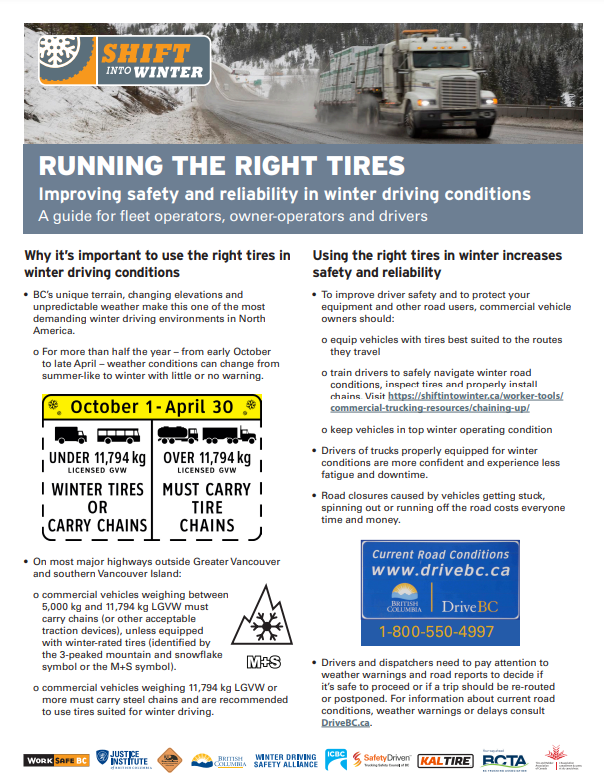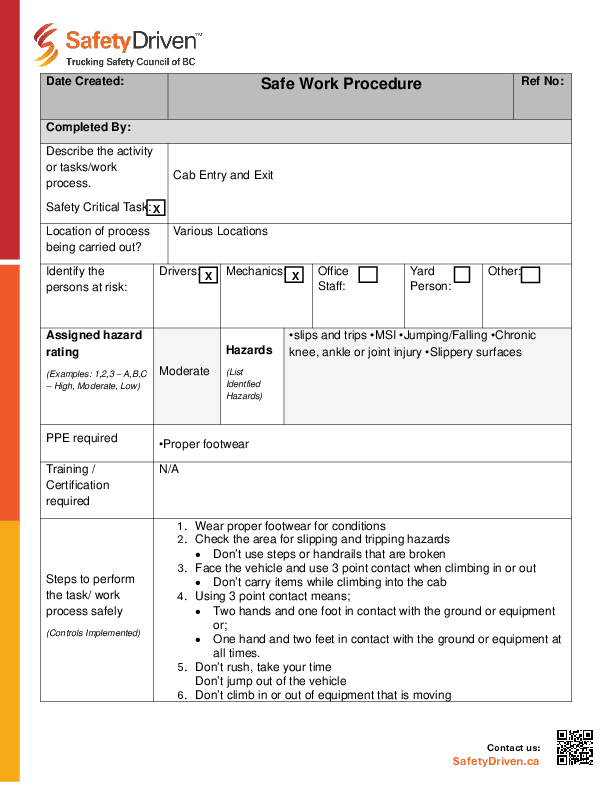
Springtime Pro Tips for Drivers
Spring is not the time to slack off
Spring is the traditional time of new beginnings. Start this spring with a review of your good driving habits and make a new commitment to staying safe.
• In spring, as in all the seasons, focus; keep your eyes and mind on your job. Pay attention to the road and look ahead for an escape route should things suddenly go sideways. Always have a plan. It will prevent personal injury, damage to your vehicle, and a ton of paperwork.
• Make sure your vehicle is ready for the season. Repair winter damage and don’t rush the season by changing your tires before the weather says it’s okay to do so. Don’t pack the chains away too soon, either. April 30 is the official last date you have to carry them, but the weather may say otherwise.
• Remember that road conditions can change drastically, especially at high elevations and in places that act as a wind tunnel, destabilizing you when it turns the sides of your trailer into a giant sail. Watch for shaded roadways, too, where ice can lurk, just waiting for an unsuspecting driver to slip-slide away. Be able to stop under any conditions in half the distance you can see.
o Sloppy roads affect visibility. Make sure you have windshield washer fluid and keep your headlights and taillights clean.
• They say a driver should get good, then get quick. Hold on there! Getting quick does not mean speeding, it means understanding your tasks quickly. Don’t speed. Spring roads are often damaged by the freeze/thaw cycle, with potholes and rough edges. It’s not just that your vehicle could be damaged, but other vehicles around you could become hazards if they are suddenly affected by the road conditions.
o While you’re not speeding, remember not to rush your work. Make sure you load and tarp properly without cutting corners.
• Look out for black ice on roads that have thawed and refrozen, especially when you have to negotiate a curve. Black ice is more likely in the evening or early morning, on bridge decks and underpasses. If you’re braking when you hit black ice, your steer tires or drive axles could lock up. A jackknife won’t be far behind.
• Make sure you have the right equipment and know how to use it, especially chains. Be aware of the current regulations and requirements. If you don’t know for sure, ask someone. There are no wrong questions.
• Be aware of the risk of sun glare, which is worst in early spring as the sun’s angle changes. Be particularly aware in the morning when you’re eastbound and evening when you’re westbound. Remember your polarized sunglasses with UV protection.
• Daylight saving time is in March. Every year sees a spike in accidents as people lose an hour of sleep and their circadian rhythm is affected. It’s natural to want to sleep when it’s dark and be up when it’s light—the fall and spring change lasts for a few days, resulting in drowsy drivers.
Remember that your safety committee is available to help you. Get their input before an incident or accident. SafetyDriven resources will help you—checking them out before something goes wrong could make a huge difference.
Latest Resources
Running the Right Tires
Road Safety at WorkUse this guide for fleet operators, owner-operators, and drivers to help improve safe ...
Safe Work Procedure: Cab Entry & Exit
An Employer can make use of a safe work procedure (SWP) by training new and existing ...

